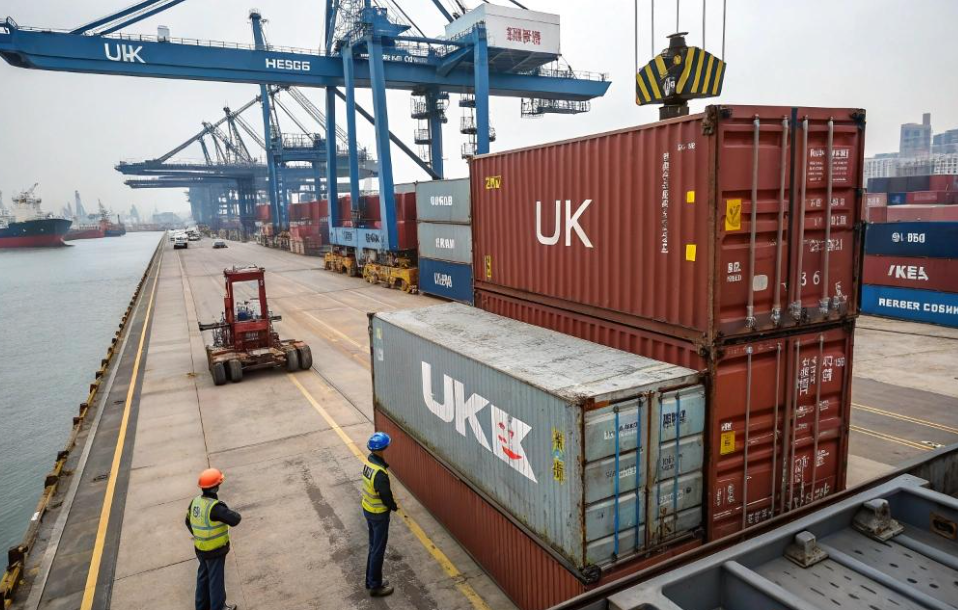Your Ultimate Guide to Sea Freight from China to the UK

Navigating the world of international shipping can be daunting, especially when it comes to transporting goods via sea freight from China to the UK. With the increasing demand for imports, understanding the nuances of sea freight can help businesses optimize operations and reduce costs. In this guide, we will explore the reasons to choose sea freight, the main ports in both countries, the best routes, shipping costs, estimated shipping times, and import customs fees.
Why Choose Sea Freight from China to the UK?
When shipping goods over long distances, sea freight presents several advantages. Firstly, it is more economical compared to air freight, particularly for bulk cargo. For businesses looking to transport large quantities of goods, opting for sea freight can lead to significant cost savings. Furthermore, sea freight is better suited for heavy and oversized items that may not comply with air transportation regulations.
Additionally, shipping by sea is often more environmentally friendly than air freight, as ships typically emit less carbon dioxide per ton of cargo transported. With growing concerns over climate change and sustainability, many companies prefer shipping methods that minimize their environmental impact.
The Main Sea Ports in China
China boasts several major ports that facilitate extensive sea freight operations. Among these, the following stand out:
- Shanghai: Recognized as the world’s busiest port, Shanghai is a key hub for international trade, offering state-of-the-art facilities and extensive shipping routes.
- Shenzhen: Located in Guangdong province, Shenzhen serves as a significant gateway for both imports and exports, with proximity to various manufacturing centers.
- Ningbo: This port is strategically located and is the second-largest port in China, providing comprehensive services for container shipping.
- Guangzhou: Serving as a major commercial center, Guangzhou is another vital port for shipping goods from southern China.
The Main Sea Ports in the UK
On the UK side, ports such as the following play crucial roles in receiving shipments:
- Port of Felixstowe**: This is the largest container port in the UK, handling approximately 40% of container traffic and offering extensive connections to global shipping routes.
- Port of Southampton**: Known for its efficiency and modern facilities, Southampton is a major port for both containers and cruise ships.
- Port of Liverpool**: With historical significance and modern capabilities, Liverpool handles a variety of cargo types and is well-connected to inland transport networks.
- Port of London**: This port has a strategic location near the capital, making it essential for trade and logistics operations.
The Best Routing from China to the UK
The best routing for sea freight from China to the UK typically involves shipping containers via major shipping lanes that connect Asia to Europe. Vessels may follow routes through the South China Sea, navigating around the Indian subcontinent, and crossing the Mediterranean Sea before arriving in UK ports. The choice of routing may vary based on the shipping line, vessel size, and weather conditions.
Shipping Cost from China to the UK
Shipping costs from China to the UK can fluctuate based on several factors, including the weight and volume of cargo, shipping route, chosen carrier, and current market conditions. On average, FCL (Full Container Load) shipping may range from $1,000 to $3,000, while LCL (Less than Container Load) can vary widely based on shipment size. It is advisable to request quotes from multiple freight forwarders to find the best rates.
Shipping Time from China to the UK
The estimated shipping time for sea freight from China to the UK typically ranges between 20 to 40 days, depending on the specific ports of departure and arrival, as well as any potential delays due to weather or port congestion. It is important to factor in additional time for loading, unloading, and customs clearance.
Import Customs Fees
When shipping goods to the UK, businesses must account for various customs fees that can affect the overall cost of importing. The UK Customs and Excise impose duties and taxes based on the value of imported goods, which may include Value Added Tax (VAT) and import duty rates that vary by product category. Proper documentation, including invoices and packing lists, is essential for a smooth customs clearance process.
Conclusion
Choosing sea freight from China to the UK can provide a cost-effective and environmentally friendly logistics solution for businesses. By understanding the main ports, routing options, associated costs, shipping times, and customs requirements, you can make informed decisions that enhance your supply chain operations. With careful planning, shipping by sea can be a valuable component of your international trade strategy.



